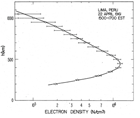
First observations of incoherent scatter echoes at Jicamarca. First ISR in operation.
1961
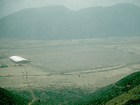
Explanation of the physical processes behind the Equatorial electrojet plasma irregularities (Farley-Buneman instability).
1961-1963

First temperatures and composition measurements of the equatorial ionosphere.
1962
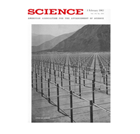
First electron density measurements of the equatorial Magnetosphere (the highest from ground based measurements even now).
1963
First VHF radar echoes from Venus.
Discovery of the so-called 150 km echoes. The physical mechanisms behind these echoes are still (as of August 2008) a mystery.
1964

VHF radar measurements of the Moon’s surface roughness. Test run and used by NASA in 1969 for the Apollo 11 with Neil Armstrong knew he was going to tread.
1965
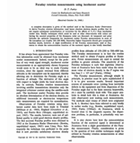
Development of Faraday rotation and double pulse techniques. Jicamarca is the only ISR that uses this technique in order to obtain absolute electron density measurements in the ionosphere.
1965-1969
Application of a complete theory about the incoherent spread that includes the effects of collisions between ions and the presence of the magnetic field. Gyro Resonance experiment that verified the complete theory of incoherent scatter.
1967

Development of the pulse-to-pulse technique to measure ionosphere Doppler shifts with very good rpecision. Later, the same technique was applied to Meteorological radars.
1969

First measurements of the zonal and vertical equatorial ionospheric drifts.
1969-1972
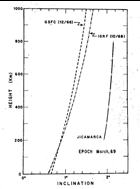
Development of the radar interferometry technique to measure size and location of the echoing region.
1971
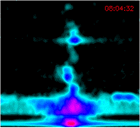
Development of the MST (Mesosphere, Stratosphere, Troposphere) radar to measure winds and clear air turbulence. Smaller versions of this type of radars are called wind profilers.
1972-1974
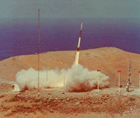
Promotion and participation in international rocket campaigns to study atmospheric and ionospheric irregularities. JRO measurements complement the in-situ measurements perform with rockets launched from Punta Lobos, Peru.
Since 1974
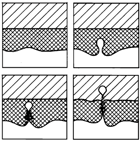
Explanation of the physics behind spread F irregularities.
1976
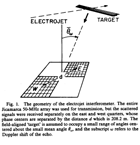
Improvement of the radar interferometry technique to measure the zonal drifts of ionospheric irregularities (EEJ and ESF).
1981-1982
Development of the Frequency Domain Interferometry (FDI) technique that allows measurements of fine altitude structure of echoes.
Dr. Tor Hagfors, former JRO Director, received the URSI Balthasar van del Pol Gold Medal, for "Contributions to radar engineering and the theory and experimental development of the incoherent scatter techniques",
Dr. Tor Hagfors, former JRO Director, received the URSI Balthasar van del Pol Gold Medal, for "Contributions to radar engineering and the theory and experimental development of the incoherent scatter techniques",
1987
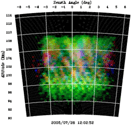
Development of the radar Imaging technique by Peruvian scientists and US colleagues. This technique permits the observation of fine angular structure inside the beam, and therefore discriminate between time and space ambiguities.
Since 1991

Installation of the first MST radar in the Antarctica.
1993
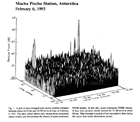
First observations of Polar Mesosphere Summer Echoes (PMSE) in the Antarctica and discovery of a significant asymmetry with respect to Arctic echoes.
1994
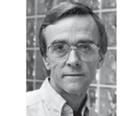
Prof. Donald T. Farley, former JRO Director and Principal Investigator, received the URSI Appleton Prize for "Contributions to the development of the incoherent scatter radar technique and to radar studies of ionospheric instabilities".
1996

First VHF radar on board of a scientific ship (BIC Humboldt), which has allowed the study of the PMSE in different Antarctic latitudes.
1997
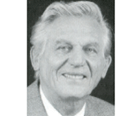
Dr. Ronald F. Woodman, former JRO Director, received the URSI Appleton Prize for "Major contributions and leadership in radar studies of the ionosphere and neutral atmosphere".
1999
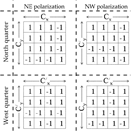
Radar technique to "compress" antennas, using binary phase modulation of the antenna modules
2000
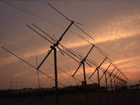
First electron density measurements of electrons between 90 and 120 km of altitude using a small bistatic radar system.
2001
First observation of pure two stream E region irregularities during counter electric field conditions.
Jicamarca 40th Anniversary Workshop.

Jicamarca 40th Anniversary Workshop.

2002
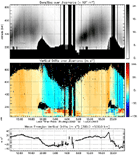
Improved perpendicular to the magnetic field observations, accompanied by refinements in theory and computations, to measure simultaneously drifts and electron densities.
Since 2003
Unambiguous measurements of the ESF spectra in the topside using aperiodic pulsing.
Discovery of 150 km echoes using beams pointing away from perpendicular to the magnetic field.

Discovery of 150 km echoes using beams pointing away from perpendicular to the magnetic field.

2004

First E region zonal wind profiles from Equatorial electrojet echoes.
2005
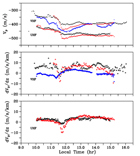
Multi-radar observations of EEJ irregularities: VHF and UHF, vertical and oblique beams, and radar imaging.
2006

Identification of sporadic meteor populations using 90 hours of JRO's meteor head echoes.
2007
First ISR full profile measurements of the equatorial ionosphere.
First observation of meteor shower from meteor-head echoes.

First observation of meteor shower from meteor-head echoes.

2008

Installation of a Fabry-Peort Interferometer at JRO.
2009

First measurements of wind profiles of the E region echoes from meteor
2010

FPI network operation in Peru
Simultaneous measurement of all parameters ISR on a routine
2011